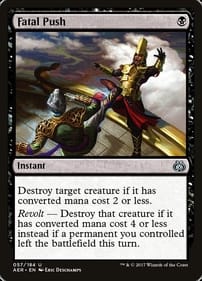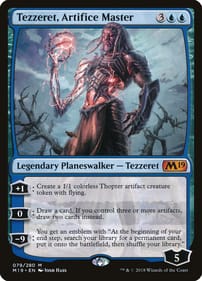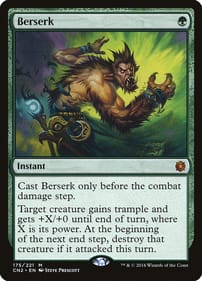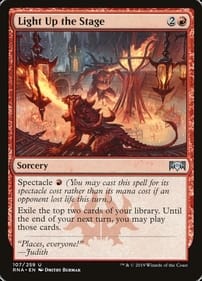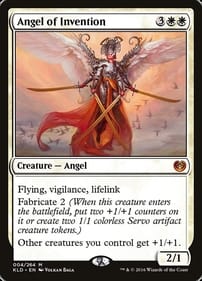Jacob "Only On Tuesdays" Wilson
Six months ago I wrote an article that showed five different cubes that did something unique. Rather than following the standard 360 vintage cube that we see on MTGO, these cubes altered a fundamental aspect of Magic to create something totally unique. Today I would like to return to this and showcase five more cubes that change the way we can interact with Magic: the Gathering.
The Cthulhu Cube: Altering the Theme

CavsFangelo has created a cube that has one purpose; invoking horror through its gameplay. This flavor-forward focus is what gives this cube amazing charm and replayability, and combines the best parts of drafting a cube with the immersive qualities you can find in a traditional booster pack draft. To achieve this the cube starts off by breaking the singleton rule. The more you stray from the traditional cube experience it is more common to see people break singleton. Breaking singleton can have a lot of benefits, in the case of the horror cube this is to ensure good gameplay while keeping the wonderful flavor.
For example, red usually relies on burn spells in order to achieve its goals. Lightning Strike isn’t as flavorful as Incinerate, so by choosing to run multiple copies he can achieve the mechanics he desires without compromising on flavor. Another interesting shift in philosophy is by including combos packaged together. If you pick up a Hanweir Garrison you’ll be handed a Hanweir Battlements alongside it. This encourages players to go for combos they might not otherwise because spending two picks on the cards instead of one is too risky. This is easy to implement in normal cubes as well and can introduce exciting new archetypes.
The main reason I love this cube is because it feels like a much more cohesive environment. Many cubes are mechanics oriented first which makes for great gameplay, but can struggle to tell a story from just the cards themselves. By shifting a little attention away from the gameplay the cube can start to benefit from every aspect a Magic card has rather than just the rules text. By harnessing the flavor a card has as well as the rules you can create something that is more than the sum of its parts.
The Turbo Cube: Altering the Rules

Link to Cube | Link to Podcast
Have you ever imagined what Magic would look like if a fundamental rule of the game was changed? There’s no need to theory craft when you can create a cube tailor made for that experience. Lucky Paper Radio did just that with the Turbo Cube. The change in the rules is extremely simple. Players get an emblem that says “Spells and activated abilities cost 2 less.” This single sentence completely overhauls the way the cube is constructed, drafted, and played and is a wholly unique environment that can’t be found anywhere else.
When trying to change the rules of the game I believe that how Lucky Paper implemented it worked very well. An emblem at the start of the game is simple and intuitive and already fits into the rules. Other ways you can alter the rules is to include cards like Conspiracies that can be drafted to alter the way your specific deck works. A card that only gives Giants a reduction in cost could bring value to an otherwise overlooked tribe. There’s more to changing the rules than just mana cost, however.
Another cube that Lucky Paper Radio has featured is the Degenerate Micro Cube. 15 card decks, you don’t lose from drawing from an empty library, and the most powerful suite of cards they could cram into a 160 card cube. Changing the rules of Magic to create a custom environment is something that only cube can accomplish. No matter what you end up doing changes like these have the potential to make bulk at the bottom of the box more powerful than the Power 9. You’ll never look at a Prophetic Prism the same way again after a draft like that.
The Goblin Cube: Altering the Legality

Many people talk about building tribal cubes that have all of their favorite tribes. What about having only one tribe? The only thing that you can reliably expect from the goblin cube is that there will be a lot of goblins. This expectation of having lots of goblins is very beneficial to the drafting environment and informs a lot of the decisions for what you should add after the 176th goblin.
While it may be simple having this expectation of a goblin being on the battlefield all the time fundamentally changes the way you view certain cards. A card like Kindred Charge more or less says “copy all creatures you control and give them haste”. That card doesn’t exist for vintage cubes but is ludicrous in this cube. This gives “aha!” moments when you see a synergy between cards in the draft that you would never get from perusing Scryfall.com.
Understanding that an element will be present in every single game alters the way we play the game. Magic as a whole always assumes that there will be lands and creatures in play and this influences design decisions. Murder is only as good as the creature it targets, and only works because it is built on assumptions about what will happen in a game of Magic. Create assumptions for your cube and then do your best to stretch what is possible within those assumptions.
The Conch Cube: Altering the Content

What if instead of a tribe being consistent you choose one specific card? Depending on what that card is can wildly change what to expect from the cube. The Conch cube tackles this question by choosing a relatively unknown card and making it the sole focus of the cube. Conch Horn doesn’t do much on the surface but when there are two in every single pack the evaluation of this card changes drastically. This near worthless card in other cube environments becomes something you need to fight over as getting a high enough quantity of this effect is necessary to succeed.
What I love about the Conch cube is the way in which every single card was chosen because it interacts in some way with Conch Horn, and maximizes a different aspect of the card. Artifact matters, top of the library manipulation, drawing multiple cards in a turn, eggs, revolt, making it cost cheaper, and locking your opponent from casting Conch Horn are all viable strategies that use the same card. Breaking it down into its components we can see every single aspect of the card is exploited and brought to its logical conclusion.
There are other ways to build around a single card as well. Lucky Paper Radio recently showcased a cube that has each player starting the game with a Pillar of the Paruns in play. (If you haven’t listened to Lucky Paper Radio yet, and you enjoyed this article I highly recommend giving them a try). The designer of the cube wanted a cube with only gold cards. By adding Pillar of the Paruns to the start of every game he solved the fixing problem inherent to gold cubes and made more cards viable due to the instant ramp and fixing it provides. If you have a pet card that you can’t get enough of try to think how Magic would change if it was on the battlefield every single game you played.
The Custom Cube: Altering the Cards

Link to Cube | Link to Podcast
Creating a custom cube is the ultimate achievement one can have as a cube curator. A stack of Magic cards that do exactly what you designed them to do and have the ability to be balanced on the fly is very enticing, and allows you to flex your creative muscles in their entirety. This is a daunting task, however. Cube is already complicated enough as is and trying to create 360 cards that are balanced and work well together is frankly a pipe dream. But, if you do decide to create custom cards for your cube a great place to start is to create cards that fit holes that you want to be filled in your current cube.
Spootyone, part of the podcast Solely Singleton (another excellent cube podcast) has been working on creating a custom cube environment. Rather than starting from scratch Spooty has decided to slowly change cards in his peasant cube until he has a complete set. For example, peasant is notorious for not having any good board wipes so Spooty decided to create his own. 3WW Wrath of God is the perfect power level for the cube and is something that WotC will never print at uncommon. Deciding to create a single custom card is a slippery slope that may lead to you creating a few more and then announcing a contest to get dozens of custom cards from your loyal podcast fanbase, but this is all just part of the fun of custom cards.
If you do decide to create a custom cube keep in mind you don’t have to reinvent the wheel. Sometimes Wind Drake is the perfect card for what you need and there isn’t a better replacement for it. You also need to make sure that your players are on board with it. If you spend a ton of time creating a custom cube and nobody wants to play with the new cards its better to stick to a traditional cube. But if you do have players that want to try something new and may even help you with the design process you’ll create an unforgettable cube experience that only your playgroup can enjoy.
Conclusion
After looking at all of these cubes closely I have realized something. If you want a powerful and unique drafting experience try to sum up what your cube does in one sentence.
“This is a horror themed cube.” / “Everyone gets an emblem that says spells and activated abilities cost 2 less.” / “This cube has a lot of goblins.” / “This cube has a lot of conches.” / This is my custom card cube.”
Obviously what I suggested doesn’t map to every single cube. There are some cubes which are wonderful draft experiences that can’t be summed up in one sentence and that is fine. But there are a lot of benefits to such a short description. It gets down to the essence of what your cube and makes it easy for enfranchised and casual players to both understand.
I like to treat cube as if it is a board game that I am designing, and Magic cards are what I can use to tweak the knobs. Narrowing down even further I like to zoom in on one specific detail of a Magic card and push it to its limits. I hope that the cubes that I have shown today are inspiring to you because ultimately what I hope this article does is give you an idea for a cube that you can then create and share with us. Thank you for reading, I hope you have a great week and an excellent Tuesday!


